
Margot Fonteyne welcomes friends and well-wishers backstage after performing the ballet Merry Widow, including Liz Taylor and Jackie Onassis
Just in case Photoplay’s dismissive March 1964 headline about Liz and Dick had suggested the wedding was a dull afterthought, the tab’s April cover made up for it, featuring the couple kissing with the lure of exclusive photos.
The affirmation of life of New Bride Liz was in stark contrast to her tab companion, New Widow Jackie who, the top banner suggested, was in some type of darker, emotional denial over her husband’s death, claiming she told her children, “Daddy is not dead!” (Because he lived in heaven, so the story revealed.)
A storyline contrasting the Bride’s joy and Widow’s grief would peter out fast, besides which Liz and Jackie had been heavily typecasted already. Soon enough, the tabs told of a fly on the wedding cake.

No matter how respectably married Liz might now be, her wanton past had led fate to curse her, so the minor-league tab TV Radio Movie Guide offered up in a new “curse” thread for Summer ‘64. It must have been true, since the October issue of Movie Mirror seemed to confirm that Liz was beset with a fear that her daughter was in danger of inheriting.
Nearing the one-year anniversary of the assassination, it adjusted the light a bit on Jackie, offering that she had “hopes” for herself and her daughter. Movie Mirror kept the segue of kids into the following spring, with a similar Liz/Jackie and daughters split-cover of tragic moms, Jackie lonely and Liz saddened.
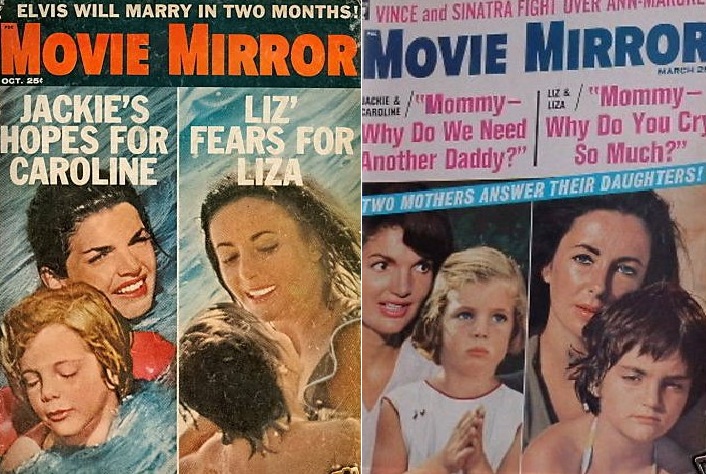
In the interest of giving her kids a father, Jackie gave an interview to Movie Mirror (or so the cover suggested), while rowboating them and musing over “love and marriage.”
Liz – the headline revealed – was trying to emulate Jackie’s role as a mom, and accumulates kids like diamonds, adopting poor old Eddie’s kids.
Whether or not Liz had yet told her “tragic secret” to Dick, she confessed to the world that their “honeymoon was a disaster.” It was a wild marriage indeed as “Liz risks her life for Burton” and he “crawls for Liz,” all the while Jackie looked pensive and wistful, wondering if it’s “Too Soon for Love.” She learns to “laugh again,” seemingly oblivious to “the men who love” her.

Meanwhile, in the legitimate news, it was learned that the real Jacqueline Kennedy had granted a frank, tape-recorded interview with author William Manchester who she’d given permission to chronicle an official history of the assassination. While it was hard to believe that teenagers were gripped by presidential history, a tween tab Teen Circle piped up to allude that it had excerpts from “Jackie’s Secret Diary” and, for balanced sensation, “Liz’s personal letters.” Inexplicably, the duo was seperated by Mia Farrow, who had no diary or personal letters to be faux-exploited by Teen Circle.
The glow over the real Jacqueline Kennedy soon dimmed in connection with the Manchester book, however. When she learned that some of her more intimate revelations in their interview were to be excerpted in Look magazine just prior to the book’s publication, she changed her mind, threatening a legal injunction to have the material removed from the book. Manchester refused. Then Jackie Kennedy offered the closest acknowledgment she was known to make about Liz Taylor’s reputation on and off the tabloids.
“Anyone who is against me will look like a rat,” she quipped. “Unless I run off with Eddie Fisher.”
But the Jackie of the tabloids was already beginning to run in that direction, if not directly to Eddie than to any number of other wild men. As Movie TV Secrets winked from its March 1965 cover that showed a smiling Jackie leaving what looks like a storage closet where Liz is leaning back on her elbow, having given her pal some wise advice, it was “What Jackie Learned From Liz.”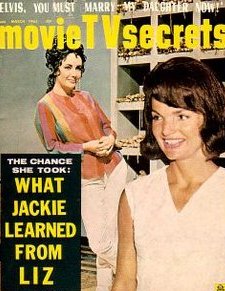
Modern Screen cornered the market on the explosive Richard Burtons but all the while with Jackie beginning to consort with dates that were obviously too scandalous. There was the “TV Star,” the “Man Who Made Jackie Leave Washington,” and “The Young Man who’s taking Jack Kennedy’s place.”
And you had to buy the December ’65 issue to see the guys she did the frug with at “Jackie’s Wild Discotheque Party!”
Finally, an indignant Photoplay had enough! Even Liz, in the middle of a romantic waltz with Dick was slack-jawed by it all, holding up a January 1965 banner headline about “The Indecent Attacks on Jackie.”
It isn’t Modern Screen but Photo Screen, a minor-league runt exploiting the names of the two biggest exploiters, that pushes things too far, alluding to “the romance Jackie and Peter won’t talk about,” as if something naughty went down between her and former brother-in-law Peter Lawford.

Perhaps worse than the implication of an affair with a divorced former relative-by-marriage was the suggestion that she ran around with a whole lot of other women’s husbands, extrapolated from the fact that she went to explore Mayan ruins with her friend and former Kennedy Administration Defense official Ros Gilpatrick, then in the midst of a separation.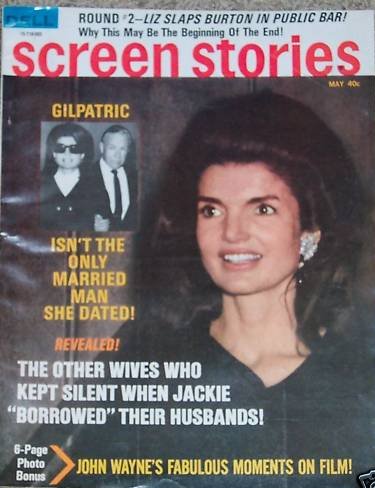
Tabloid Jackie begins to retreat, getting ahold of her senses. She had come close – on the August ’66 cover of Movie Mirror – to marrying again, but “It was too soon to say yes to him” (whoever the him who’s neck and ear were shown).

And she held her emotions in check far better than those wild Burtons in the picture above her, Dick’s violent nature scaring Liz. Movie Stars had suggested this with a real touch of class in revealing “the night Jackie snubbed Liz and Dick.”
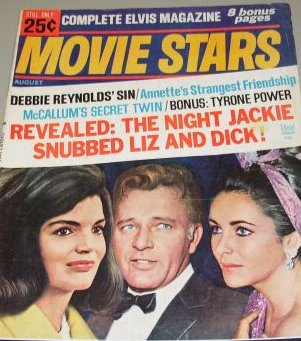
In the five years after 1963, Liz and Jackie couldn’t have been further apart than they were by 1968. It again looked like the end of their enduring tab antagonism was nearing.
As the decade unraveled with hippies, pot and mini-skirts, all havoc breaks lose in 1968. The Vietnam War escalates, Robert Kennedy and Martin Luther King are assassinated and it looks like “Liz is losing Burton,” according to Modern Screen’s October issue, which mentions the three famous widows victimized by murder – Jackie, Ethel Kennedy and Coretta Scott King. Just when it looks like Liz will now be back on Jackie’s single side of the fence comes breaking news that month. Jackie Kennedy has a parallel moment with Liz, akin to the breakup of Debbie and Eddie.
On October 20, 1968, the former First Lady shocks the world by marrying Greek shipping tycoon Aristotle Onassis. Asking “Jackie, how could you?” Motion Picture declares it “the strangest marriage of the century! “And just when it looks like tabloid Liz is more reliable by comparison, she’s now “paying the price” for drinking and adultery – just as Jackie’s about to convert on Motion Picture!

Jackie celebrates with Onassis
Not even the image of young Liz before her “lost innocence” with hands folded in terrified prayer can stop it! Once again, the tab subliminally blended the women: above the image of Liz praying was the headline “Jackie to convert.”
More than anything in the real lives of Elizabeth Taylor and Jacqueline Kennedy, the latter’s second marriage to Aristotle Onassis posed a potential threat to the ongoing antagonism between tabloid Liz and tabloid Jackie simply because the former was an old friend of the latter’s new husband.
The tabloid formula oddly steered clear of miring itself in the specifics of incidents in the lives of the real women, spinning their best by presuming what the women’s emotions were in reaction to those incidents, thereby making them seem personally accessible.
The “personality” or gossip columns of mainstream publications, like Time or Newsweek might provide comparative reports on the history, cut and cost of the gargantuan diamonds that Onassis gave Jackie and Burton gave Liz, but the tabloids offered stories of both wives angrily throwing the rings back at their obnoxious husbands.
As the man they both knew, however, Onassis did offer a chance for face-to-face encounters between tabloid Liz and tabloid Jackie, like Movie Mirror’s June ‘70 “secret visit” story about Liz flirting with Onassis and Jackie forcing him to end the friendship.
When it was her husband’s ex-lover, opera star Maria Callas that Jackie was soon ordering him to banish (Screen Stories February ’71) she was again paired with Liz, “two desperate women” who “gamble all,” the root of their troubles being husbands.

As the 70s ensued, “America’s Two Fallen Queens” remained unhappy, still mostly over the men in their lives, generally, and Onassis, specifically. Modern Screen wondered, “Will Jackie and Liz have to fight?”
By the end of 1972, Modern Screen trumped up a good old-fashioned betrayal, suggesting Liz was having a child with Jackie’s husband.

At this point, following the duo’s crossed fates for over a decade, even the most gullible of tabloid readers would have found the claim ludicrous and somehow pathetic.
Within the large American cultural context, the end of 1972 was a watershed turning point. Engorging itself on the sugary distractions issued by not just the tabloids but their very own government, the nation’s faith in what it had willingly believed to be reliable institutions was on the brink of dissolution. For two decades, it had believed four consecutive Presidents that America would be successful in halting the spread of communism by winning the Vietnam War. President Nixon announced withdrawal from the conflict, however, rather than a definitive victory.
Instead of crushing the spread of communism from North Vietnam to South Vietnam, the American people only received hundreds of thousands of young men returning home in coffins or alive with trauma and missing limbs.
And while the lies of the Watergate scandal and the resignation of a president eroded the nation’s willingness to suspend doubt and entirely believe whatever its government said, the new sobering reality of America were the “shrinking dollar,” and an “energy crisis.”
The creeping skepticism about the World of Tomorrow that never quite arrived was captured in a cynically satirical song written in 1972, told from the viewpoint of those working-class and poor women in middle America who the tabloids had addicted to stories about the scandalous, glamorous lives of Liz and Jackie, and how dismally different the reality of their own existence truly was.
Made famous by twangy country singer Loretta Lynn, “One’s On the Way” made direct reference to the tabloid tales of Liz and Jackie in its opening lyrics:
Liz gets hair done.
They say to have her hair done, Liz flies all the way to France
Jackie arrives at Studio 54 disco.
And Jackie’s seen in a Discotecque doin’ a brand new dance
And the White House social season should be glitterin’ an’ gay
But hee in Topeka the rain is a fallin’
The faucet is a drippin’ and the kids are a bawlin’
One of ’em a toddlin’ and one is a crawlin’
And one’s on the way…
Liz Taylor divorced Richard Burton in June of 1974. Nine months later, Jackie Kennedy was widowed by the death of Aristotle Onassis in March of 1975. (Taylor did give Burton a second chance from October 1975 which permanently ended in July 1976).
Finding themselves as single mid-life women in the mid-1970s began the process of both women defining their lives on their own terms, regardless of the residual fantasy narratives that the former First Lady once defined as “the little cartoon that runs beneath one’s real life.”
Considering the Movie Star and First Lady as their proprietary commodities, the tabloids had felt free to contrive the most exaggerated interpretations and outrageous story lines to sustain their lucrative Liz-Jackie Sage for over a decade.
Strangely, however, they were careful to never tread into the most sensitive areas of the real women’s real lives. In a peculiar sort of homage of respect, the tabloids never dared to reveal the factual truths behind the artfully crafted public images that Liz Taylor and Jackie Kennedy had carefully constructed about themselves for public dissemination – and did not want to be contradicted.
Like the origin of their maternal families.

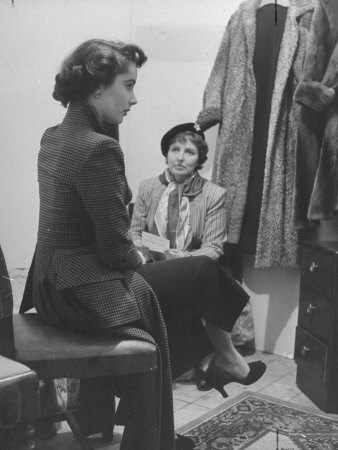
Elizabeth Taylor with her mother Sara Taylor who, despite cultivating an impression of being a British aristocrat was born and bred in rural Kansas, where her daughter briefly attended grammar school.
London-born Liz Taylor, for example, always made herself out to be the quintessential Englishwoman, a fact seemingly confirmed when, as a British citizen she was declared a Dame by Queen Elizabeth.
In all the years the tabloids were flourishing in middle America, many might have been outraged and horrified by a tabloid story that revealed a truth that rarely even made a whisper about the exotically aristocratic Liz.
Yes, Elizabeth Taylor was raised in Kansas.
It was not even in the humming midwestern hub of Topeka or academic center of Lawrence. No, while glitzy Liz entered the world in 1932 London, records show that at ten months old, she was living in the utterly unglamorous town of Arkansas City, just above the Oklahoma border.
The forgettable “hick-town,” as she once dismissed it, was where her maternal grandparents and mother had also been born and raised, and where her parents met.
The family, along with her older brother Howard, returned for five years to live in England where her father Francis was an art dealer. In 1937, however, six years old Liz Taylor returned to Ark City, Kansas and attended Roosevelt Elementary School there.
They eventually settled in Los Angeles.Except for a brief trip with her later husband, U.S. Senator John Warner to visit legendary Republican leader Alf Landon, Liz Taylor never returned to Kansas, repeatedly ignoring invitations to visit the state and town. Five years before her death, she rejected one last invite, to attend the 75th anniversary of Arkansas City’s Arkalalah Festival, but this time donated $750 to underwrite its light parade.
With her maiden name of “Bouvier,” and fluency in the French language and culture, the tabloids never examined Jackie Kennedy’s background to realize she was only one-eighth French or that her mother’s descent was not from her claim of the aristocratic colonial Virginia Lee family but rather the “shanty Irish” Lee family of Cork, Ireland.
One of the last times their names were linked in a tabloid was Photoplay’s November 1976 issue. The world had changed.
Instead of cheesecake there was beefcake on the cover.
By then, Liz and Jackie had been reduced to the very last words on the cover, unworthy of any headline or doctors pictures, mentioned merely as afterthought following the “5 Big Gossip Columns” inside the issue.
They had sunk so very low, beneath even “The Sally Struthers Nobody Knows.”
Perhaps it was revenge of the tabs for the real women having so stridently moved in new directions with their lives.
That same month, Elizabeth Taylor assumed the same official role Jacqueline Kennedy once held, a U.S. Senate spouse, when she married John Warner of Virginia and moved to a Washington, D.C. home just four blocks away from where Jackie had lived as a Senate wife some 25 years earlier.
From the perspective of the tabloids, what Liz did was almost as bad as what Jackie had done a year earlier – she went to work, taking a job which began to use her talents, as an editor at the book publishing house Viking Press.


The two legends of the tabloids, “Liz” and “Jackie” couldn’t help grinning at each other the moment they finally met face to face, by surprise. Somewhat true to their tabloid personas, Liz wore a dress that was low-cut while Jackie’s was a bit more upper-cut.
It was during this period of relative calm and happiness in their personal lives that – for the first and only known time – the Actress and First Lady met in real life.
Another fact overlooked by the tabloids was that both Liz and Jackie had both undertaken the rigors of ballet training in their youth. Had some hotshot Movie Mirror editor known, they might have sent a paparazzi on June 20, 1976 to wait outside the stage door of New York’s Uris Theater.
That night, the ballerina legend Margot Fonteyn was dancing with the Australian ballet. Afterwards two of her oldest friends in the audience decided to surprise her backstage. In the process, they surprised everyone else, but especially each other.
Jackie met Liz, Liz met Jackie. Finally.

Program from the night Liz met Jackie.
It can hardly be called a “meeting,” it was so accidental as they nearly bumped into one another down a crowded hall.
Everyone else falling into line behind them, they walked side by side, processioning like the Red and White Queens of Wonderland, culled down by a laughing Margot Fonteyn from her open dressing-room door.
Both seemed star-struck by each other and couldn’t help grinning at the absurdity of the moment after all those years of tall tales stories teaming together their fates. In fact, every person around them couldn’t help grinning.
One unknown but enterprising wire service photographer, tipped off, managed to get to the theater before the performance was over and snapped the only three known pictures of that magic moment.
What did they say to each other?
Nothing at all.

June 20, 1976, backstage at the Uris Theater in New York: Led down a hall by an unidentified ballerina, Elizabeth Taylor and Jacqueline Kennedy Onassis bumped into each other on their way to visit their mutual friend, legendary ballerina Margot Fonteyn.
At least nothing overheard and reported by all those there, waiting for them to interact.
Once they were both ensconced behind the closed door of Fonteyn’s dressing room, it was likely they focused on their friend’s performance that nigh rather than one another. None of those present ever reported anything Liz or Jackie may have said to each other.
Jacqueline Kennedy Onassis would succumb to cancer in May of 1994, once it had spread even to her brain. Just three years later, Elizabeth Taylor survived her brain cancer surgery, dying in 2011.
As triumphant survivors of emotional trauma, let alone tabloid turmoil, what stands out about their brief crossing of paths was how beaming and bold they appeared. Both women couldn’t have failed to note the amusing irony of the title of the performance they both watched that night, adapted from an old opera.
The Merry Widow.
Categories: First Families, First Ladies, Hollywood, Myths, The Kennedys
Tags: 1960s, Aristotle Onassis, Bobby Kennedy, Jackie Kennedy, John F Kennedy, Liz Taylor, tabloids



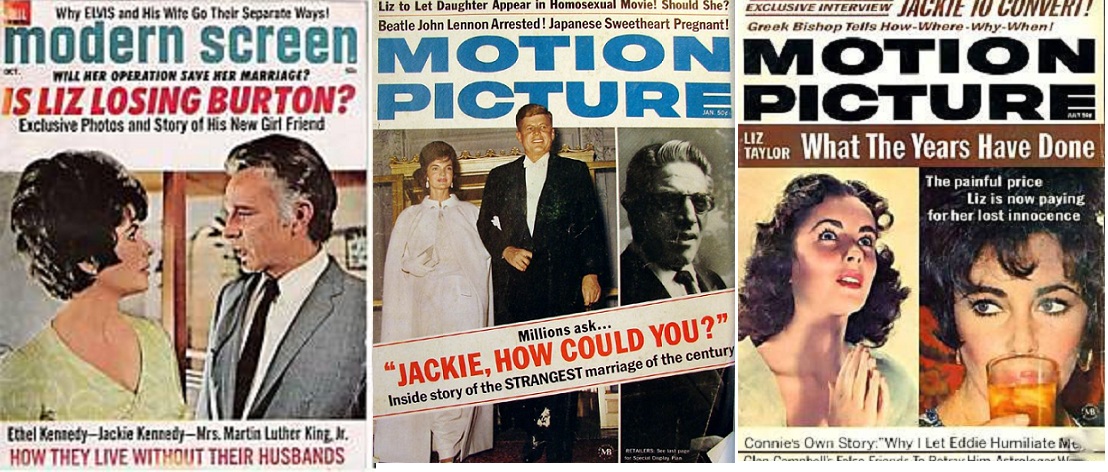

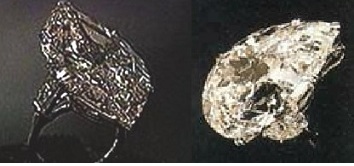
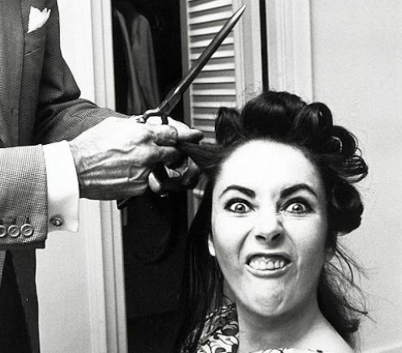
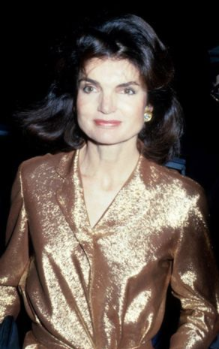

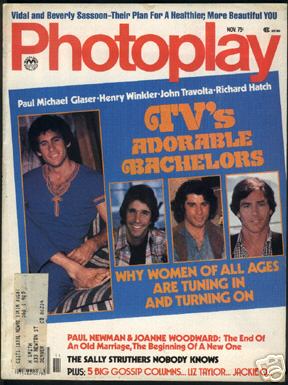
 Jackie & The Nixons: Mrs. Kennedy Returns to the White House, With New Images of the Visit
Jackie & The Nixons: Mrs. Kennedy Returns to the White House, With New Images of the Visit  Jane & Jill, Potential First Ladies: Lots in Common Between the Wives of Joe Biden & Bernie Sanders
Jane & Jill, Potential First Ladies: Lots in Common Between the Wives of Joe Biden & Bernie Sanders  The President as King: A Political Cartoon History
The President as King: A Political Cartoon History  The First White House Valentine’s Day Dance: the McKinleys, Ragtime, Racism & The Romance of the “Ghost Girls”
The First White House Valentine’s Day Dance: the McKinleys, Ragtime, Racism & The Romance of the “Ghost Girls”  Liz Taylor Meets Jackie Kennedy: Tabloid Fantasy to Chance Encounter & The Only Photos of Them Together, Part I
Liz Taylor Meets Jackie Kennedy: Tabloid Fantasy to Chance Encounter & The Only Photos of Them Together, Part I  Melania Trump v. John Kelly: First Ladies & West Wing Personnel, A Brief History
Melania Trump v. John Kelly: First Ladies & West Wing Personnel, A Brief History
Leave a Reply